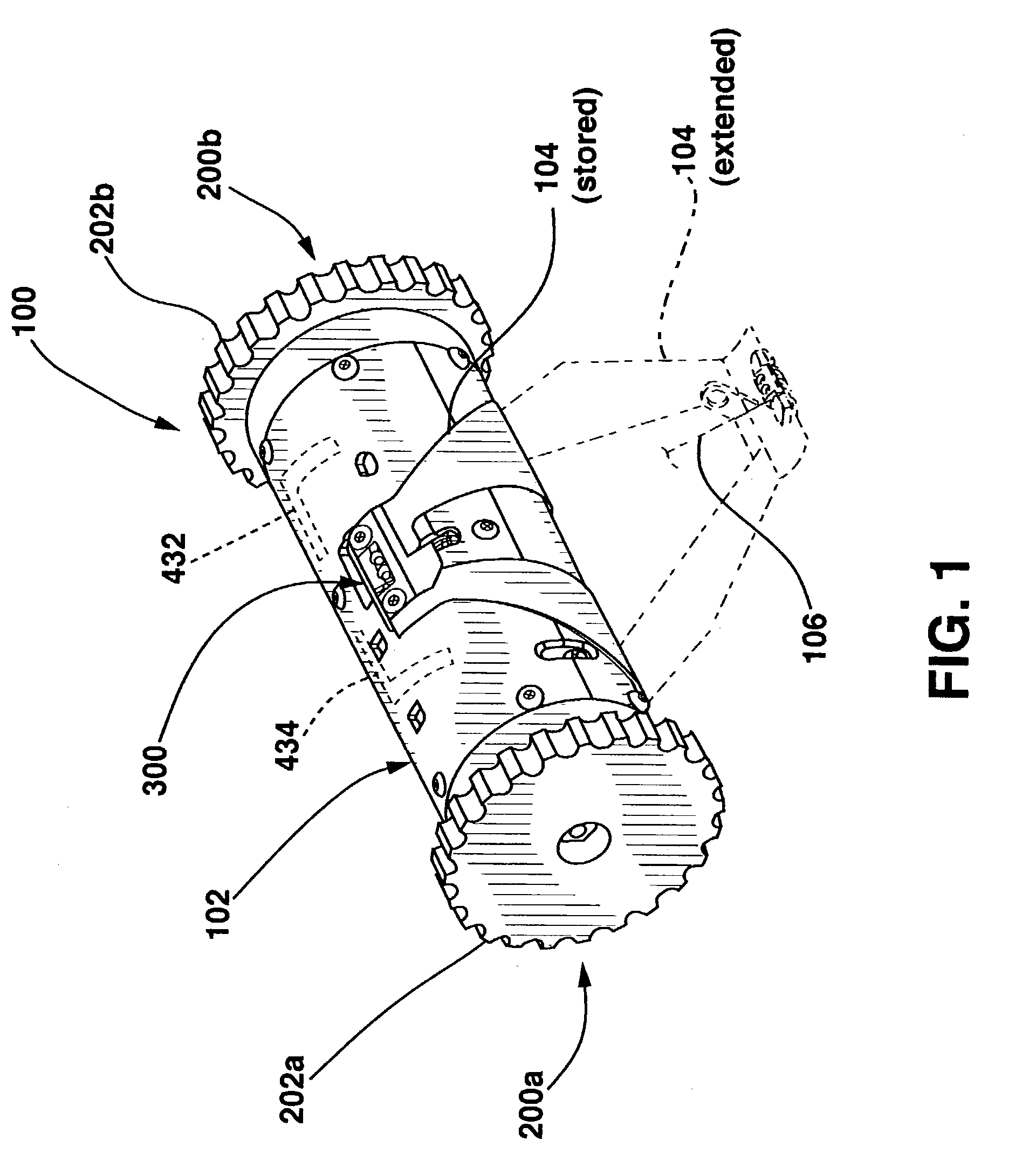Miniature robotic vehicles and methods of controlling same
a robotic vehicle and miniature technology, applied in the direction of electric programme control, program control, instruments, etc., can solve the problems of static devices, e.g. video cameras, not always providing the range of coverage needed for an unanticipated surveillance situation, drawbacks exist,
- Summary
- Abstract
- Description
- Claims
- Application Information
AI Technical Summary
Benefits of technology
Problems solved by technology
Method used
Image
Examples
Embodiment Construction
[0035] In the following detailed description of the embodiments, reference is made to the accompanying drawings which form a part hereof, and in which are shown by way of illustration specific embodiments in which the invention may be practiced. It is to be understood that other embodiments may be utilized and structural changes may be made without departing from the scope of the present invention.
[0036] As described herein, the present invention is directed to miniature robotic vehicles (also referred to herein as "robots") and methods for their use either alone or, alternatively, as part of a multi-unit, robotic system. While advantageous in many applications, one role for which these apparatus and methods are particular beneficial is surveillance / reconnaissance missions. In this role, a robotic system deploying multiple robots provides inherent advantages over single unit systems. For example, with multi-unit systems, individual units may be expendable without jeopardizing the ov...
PUM
 Login to View More
Login to View More Abstract
Description
Claims
Application Information
 Login to View More
Login to View More - R&D
- Intellectual Property
- Life Sciences
- Materials
- Tech Scout
- Unparalleled Data Quality
- Higher Quality Content
- 60% Fewer Hallucinations
Browse by: Latest US Patents, China's latest patents, Technical Efficacy Thesaurus, Application Domain, Technology Topic, Popular Technical Reports.
© 2025 PatSnap. All rights reserved.Legal|Privacy policy|Modern Slavery Act Transparency Statement|Sitemap|About US| Contact US: help@patsnap.com



